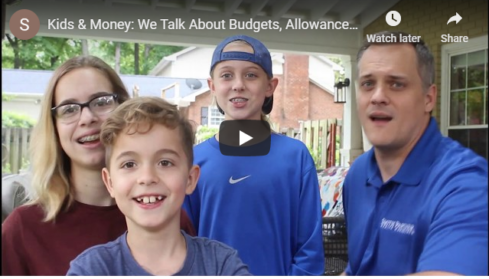Student Loans: The Best Tools (Part 2 of 2)
The following is the second in a two part series on school debt. See our first part here.
Now What?
 As we mentioned in our previous post (Student Loans: Assess the Situation), the first step to paying off student loans is to know what you have. After you fully comprehend what your debt is, you can look at the option that best fits your situation. Below we have laid out a summary of some of the best tools for tackling school debt. As with any financial situation, what works for one person might be a bad fit for another. It is worth looking at any of these plans within the greater context of your full financial picture.
As we mentioned in our previous post (Student Loans: Assess the Situation), the first step to paying off student loans is to know what you have. After you fully comprehend what your debt is, you can look at the option that best fits your situation. Below we have laid out a summary of some of the best tools for tackling school debt. As with any financial situation, what works for one person might be a bad fit for another. It is worth looking at any of these plans within the greater context of your full financial picture.
Employer Assisted Payback
Many employers are willing to assist in student loan payback as a way to retain and attract talent. For example, Price Waterhouse Coopers (PWC) will pay $1,200/yr, Title 1 schools will pay up to $17,500 (total), Veterans Affairs (VA) offers up to $10,000/yr ($60,000 total) and many more employer offerings can be found here. Don’t see your employer listed? Consider asking your employer if offering student loan aid as a benefit is possible.
The PSLF (Public Service Loan Forgiveness) program is a unique type of employer assisted payback for Government and non-profit employees. Through the PSLF, the Government will forgive your loans after 120 payments (10 years) without leaving you with a huge tax bill (unlike the government forgiveness plans discussed below.)
Income Driven Repayment Plans
We often see these plans working well for individuals with a low income compared to their amount of debt, or an income close to 150% of the poverty level. The poverty level is an income of $18,090 + $6,270 for every person in your family unit. Before embarking on a specific plan, you should consider all 5 options: Revised Pay As You Earn (REPAYE), Income-Contingent Repayment (ICR), Income-Based Repayment (IBR), Pay As You Earn (PAYE) and Income Based Repayment for New Borrowers (New IBR). A detailed comparison of these plans (including eligibility, timelines, and estimated payment) can be found here.
A large part of evaluating these plans revolves around the Government forgiving part of the loan after 20-30 years. Of course, “debt forgiveness” sounds great until the borrower gets the tax bill. Under these income driven repayment plans, the forgiven amount is counted as income in the year it is forgiven. So if a borrower has $100,000 forgiven in 2017, their 2017 taxable income will go up, forcing them to pay at least $25,000 in additional taxes. Often, income driven repayment plans are most advantageous for borrowers with a relatively low income and little chance of having their loan capitalized.
- What is Capitalization?
- Capitalization occurs when accumulated interest is added to principal. Capitalization triggering events could be anything from refinancing or entering a repayment plan to ending forbearance/deferment.
- Capitalization Example: Chris has $100,000 in student loans at a 7.2% interest rate. He decided to follow the income based repayment route and has been making minimum payments of $200 per month. At the end of 10 years, his principal is still $100,000, however his accumulated interest has grown to an additional $43,200 of outstanding debt.
- If Chris now decides to consolidate this loan into a private loan or government repayment plan, the accrued interest will be capitalized (added to the principal) and the new principal amount will be $143,200.
- Going forward, instead of paying $7,200 per year toward interest ($100,000 * 7.2%), Chris will now have to pay $10,310.40 ($143,200 * 7.2%). Chris would need to refinance below 5% just to make it worth refinancing.
Should You Refinance?
If income driven repayment plans are not a great fit and your interest rate is higher than the market average, refinancing could be worth pursuing. Proceed with caution. While lowering your interest rate might sound like the perfect solution, it is important to understand the risks that come with refinancing, such as capitalization, loss of government forgiveness options, loss of deferment/forbearance options, and increased liability for you and possibly your spouse (more information on the risks here.)
More information on reputable student loan refinancing companies and the details of their loan packages can be found here.
The Old Fashioned Way
The best answer to these complicated problems is often to keep it simple: keep your loans where they are and pay them off as fast as possible. If this is the case, consider either paying down the highest interest rate loans first or look into the debt snowball pay down plan.
Student Loan Prevention
Of course, the best way to minimize student loans is to avoid them. Plan ahead and tax efficiently save for college with Coverdell and 529 accounts. Apply for scholarships, go to community college for two years, or pick up a technical skill. Look at all the options, plan ahead, and know what you’re getting into. If you have any questions, email us at team@smithpartnerswealth.com, we would be happy to help.








